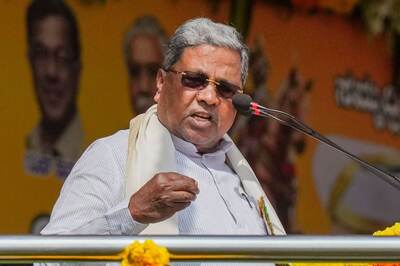
views
WASHINGTON/BRUSSELS: The United States and its allies have mapped out detailed plans for coordinated, severe sanctions if Russian troops physically invade Ukraine, but how they should respond to other kinds of aggressions is far from agreed, U.S. and European officials say.
That ambiguity could slow the pushback Russian President Vladimir Putin will face if Russia repeats past tactics like identifiable cyberattacks, a disinformation campaign, or stepped-up support for pro-Russian separatists.
Senior European diplomats, requesting anonymity, told Reuters there had been some planning for “a range of scenarios” and various contingencies, including the kind of cyberattack seen in Ukraine this week that has yet to be conclusively linked to Russia, but any coordinated response would require additional consultations.
While there is general agreement that sanctions would be ready within 48 hours of an “invasion,” discussions around what, exactly, the trigger point would be continue, they said.
“You can think of thousands of scenarios” that Russia could execute in or around Ukraine that would raise the question of whether sanctions were merited, said one senior EU official. “It is a purely and highly political discussion in the end,” the official said.
Germany, a key ally in the coordinated response given its strong trading ties with Russia, has argued hard both in public and behind closed doors for what it calls “strategic ambiguity” about the plans to keep Putin guessing.
For all the talk of a “massive” EU sanctions package, European diplomats say Russia’s closest friends in the bloc – Hungary, Italy, and Austria – have an understanding that these will only be imposed if there is a Russian military attack.
The hyperfocus on a physical invasion has taken some of the attention off other irregular warfare threats, but it also reflects differences among the allies on how to respond to non-military actions, one U.S. official said.
The White House did not immediately respond to a request for comment.
Sweden has suggested a discussion about a course of action if Putin never attacks and reduces troop levels slightly, but sits on the border with Ukraine, massively pressuring the Ukrainian economy and firing off the occasional cyberattack.
The rest of the bloc is not keen to delve into this scenario, because it threatens to open up EU divisions and break the united front, several officials said.
“Many EU countries do not want to get into a discussion about what else might merit sanctions, be it cyber or a sustained military presence on Ukraine’s borders but no invasion, because those closest to Russia, such as Hungary, will be against any sanctions short of a military invasion,” said one of the senior diplomats.
Others, including Poland, argue that the EU should only respond if this type of harassment of Ukraine continues “indefinitely.”
A second U.S. official noted that it was also difficult to plan for the wide range of actions Russia could take. Telegraphing U.S. and allied plans now could allow Putin to do a more precise cost-benefit analysis, giving him a potential advantage.
The White House was forced to clarify the U.S. definition of “invasion” in January as military troops across the border, after President Joe Biden told reporters a “minor incursion” might bear a lower cost.
U.S. national security adviser Jake Sullivan told reporters this week that Biden believed that in order for sanctions to be effective, they needed to be imposed if Putin moved against Ukraine, not beforehand.
The most important factor was that the West remained strong and united in its effort to deter Putin, he said.
The priority now was to avoid what increasingly looked like “an imminent military invasion” of Ukraine, one of the diplomats said.
Disclaimer: This post has been auto-published from an agency feed without any modifications to the text and has not been reviewed by an editor
Read the Latest News and Breaking News here


















Comments
0 comment